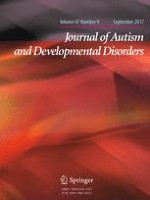06-06-2017 | Original Paper
Diagnostic Substitution for Intellectual Disability: A Flawed Explanation for the Rise in Autism
Gepubliceerd in: Journal of Autism and Developmental Disorders | Uitgave 9/2017
Log in om toegang te krijgenAbstract
Time trends in autism spectrum disorder (ASD) and intellectual disability (ID) prevalence from the United States Individuals with Disabilities Education Act data were computed from 2000 to 2011 for each state and each age from 6 to 17. These trends did not support the hypothesis that diagnostic substitution for ID can explain the ASD rise over recent decades, although the hypothesis appeared more plausible when the data were aggregated across all states and ages. Nationwide ID prevalence declined steeply over the last two decades, but the decline was driven mainly by ~15 states accounting for only one-fourth of the U.S. school population. More commonly, including in the most populous states, ID prevalence stayed relatively constant while ASD prevalence rose sharply.
